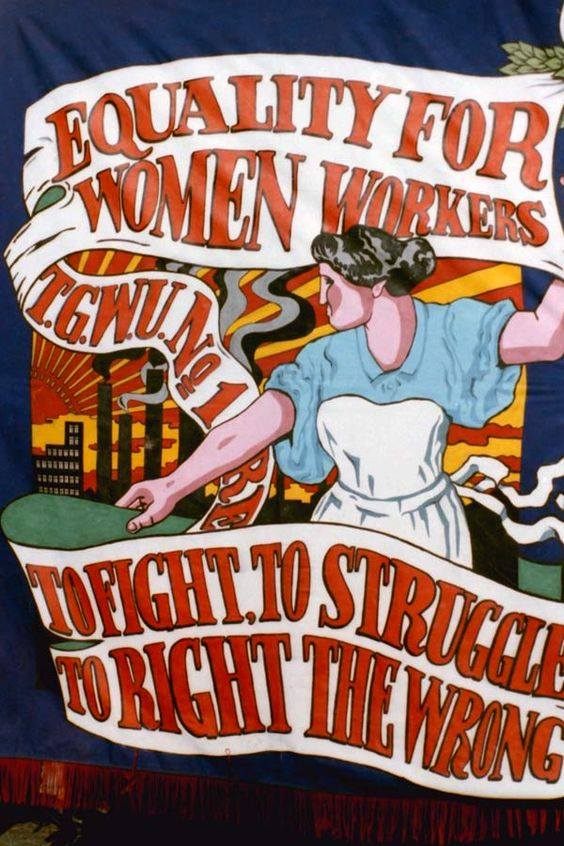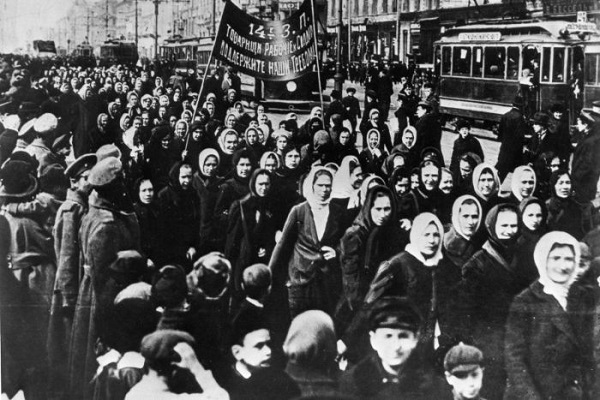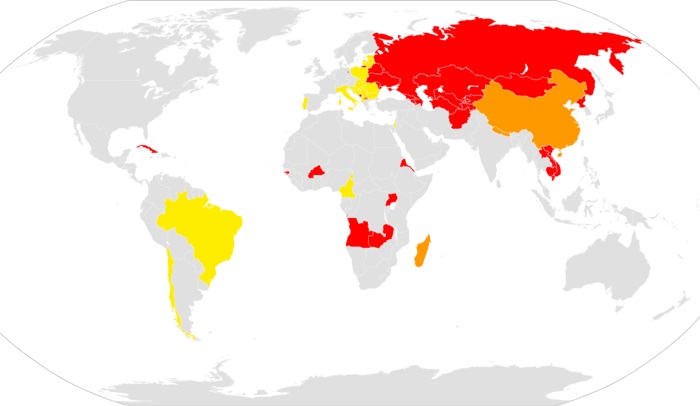Friday 8 March was International Women’s Day. Here’s a post I believe from the Sydney Trades Hall:

Here’s a lovely shot of how the Story Bridge in Brisbane was coloured purple:

I have to confess I had not taken much notice to this point, but suddenly this year it was everywhere. So I Googled and was told:
- International Women’s Day (IWD) is celebrated on March 8 every year. … After women gained suffrage in Soviet Russia in 1917, March 8 became a national holiday there. The day was then predominantly celebrated by the socialist movement and communist countries until it was adopted in 1975 by the United Nations.
However, if you google ‘international women’s day history‘, you find out that is wrong. The chronology from this piece dates the beginning in 1909 when:
-
The first National Woman’s Day was observed in the United States on 28 February [1909]. The Socialist Party of America designated this day in honour of the 1908 garment workers’ strike in New York, where women protested against working conditions.
In 1910:
- The Socialist International, meeting in Copenhagen, established a Women’s Day, international in character, to honour the movement for women’s rights and to build support for achieving universal suffrage for women.
In 1911 rallies were held in Austria, Denmark, Germany and Switzerland, where more than one million women and men attended.
Then in Russia in 1917:
-
On a winter’s morning in Petrograd, women begin streaming onto the streets.
Two million men have died, food is running out, and women have reached breaking point.
By late afternoon, some 100,000 workers walk out of their factories to join them. On their way, women smash windows of stores, raid the shelves for bread and food.

That’s according to an excellent article at the ABC – International Women’s Day went from bloody revolution to corporate breakfasts.
Seven days later the Russian Revolution had begun, the tsar is gone, and women won the right to vote.
By this time the date was always late February or early March. In Russia in 1917 IWD was celebrated on the last Sunday in February, which happened to fall on 8 March on the Gregorian calendar. So when the United Nations made it an official day in 1975 it chose 8 March.
In Russia International Women’s Day is like a combination of our Mothers’ and Valentine’s Day, where Russians buy gifts to celebrate the women in their lives.
IWD may have been forged in socialist revolution, but it is now pretty much subject to corporate capture. Eva Cox thinks it’s more about PR than politics. She’s looking at more substantial issues, for example, she wants to know why caring and domestic work remains unpaid.
Then try this for size:
-
Last year, Esprit was criticised for sponsoring IWD while engaging Bangladeshi women as sweatshop labour.
“This is often the problem with such corporations,” wrote Celeste Liddle.
“Their politics are performative while their practices are exploitative. As a result, the very real struggles of some of the most disadvantaged get white-washed via ribbons and cupcakes.”
A common critique of brands’ involvement with IWD is that their messaging is, necessarily, conservative. Women’s empowerment is spoken about in broad, general terms — there’s little reference to specific issues facing women, like sexual violence or reproductive rights.
“This is a watering down of any kind of feminist message and selling us a feel-good feminism, that encourages women to invest in their aspirations, be empowered and ‘lean in'”, says Catherine Rottenberg, author of The Rise of Neoliberal Feminism.
“This is a palatable and marketable feminism because it is non-threatening: it doesn’t address the devastation wrought by capitalism, misogyny and sexism.”
This year the theme is “Think equal, build smart, innovate for change”.

The UN IWD site emphasises some goals selected from the UN Sustainable Development Goals for 2030, thus putting IWD into a broader frame of action:
- By 2030, ensure that all girls and boys complete free, equitable and quality primary and secondary education leading to relevant and Goal-4 effective learning outcomes.
- By 2030, ensure that all girls and boys have access to quality early childhood development, care and preprimary education so that they are ready for primary education.
- End all forms of discrimination against all women and girls everywhere.
- Eliminate all forms of violence against all women and girls in the public and private spheres, including trafficking and sexual and other types of exploitation.
- Eliminate all harmful practices, such as child, early and forced marriage and female genital mutilation.
By contrast there is a very slick corporate-sponsored site which makes the theme:
#BalanceforBetter
The future is exciting. Let’s build a gender-balanced world.
Everyone has a part to play – all the time, everywhere.
From grassroots activism to worldwide action, we are entering an exciting period of history where the world expects balance. We notice its absence and celebrate its presence.
Balance drives a better working world. Let’s all help create a #BalanceforBetter.
Hard to object. The push seems towards gender inclusiveness, we are all in this together.
Our PM Scott Morrison had his head in a complete muddle and made an International Women’s Day speech so bad it made it onto CNN.
His main worry seemed to be that women should not rise only on the basis of others doing worse. He says:
it was “not in our values” to “push some people down to lift some people up”.
That went down a treat. At Mamania Belinda Jepsen reckoned Scott Morrison just made the worst International Women’s Day speech in the history of forever.
Wikipedia tells where IWD is celebrated with a holiday:
-
The day is an official holiday in Afghanistan, Angola, Armenia, Azerbaijan, Belarus, Burkina Faso, Cambodia, China (for women only), Cuba, Georgia, Guinea-Bissau, Eritrea, Kazakhstan, Kyrgyzstan, Laos, Madagascar (for women only), Moldova, Mongolia, Nepal, Russia, Tajikistan, Turkmenistan, Uganda, Ukraine, Uzbekistan, Vietnam, and Zambia.
This map shows red for an official holiday, orange for women only, and yellow for a non-official holiday, whatever that it:

Berlin, a city state within Germany, has now declared International Women’s Day a public holiday, the first German city to do so.
Unlikely here in Oz anytime soon. Nevertheless, International Women’s Day is one day we can at the very least honour and celebrate the amazing women in our lives.
What about International Men’s day, you may ask? Well there is one, it’s November 19th, started in 1992, it’s not just the other 364 days.

I was going to do two lines on this topic for Weekly salon, but once again got carried away. Not sure how I’ll go with salon now, as I’m actually working on our tax return, Mark is coming over tonight (again) and fairly busy during the week.
I hope that all the 2030 objectives are met everywhere before 2030 – and that people in the 22nd Century will still think that Women’s Day is a nice event.
Very interesting one on female quotas in India Some key information: India provides a randomised experiment
But there is one fascinating international example which lends itself well to a more scientific analysis.
The Harvard behavioural economist Iris Bohnet wrote, in her recent book What Works, about India’s Panchayati Raj Act, which in 1993 decreed that one third of local council seats would henceforth be reserved for women.
Moreover, the legislation directed, a third of village leaders in any given district had to be female……..
by 2005, the proportion of local government seats occupied by women had risen from 5 per cent to 40 per cent — well beyond the legislated target.
And the fascinating part of the experiment was this: The villages whose turn it was — each election — to have a female chief were chosen at random. Out of a hat!
So researchers were handed their dream of a randomized trial; a collection of very similar villages, some of which were handed female leaders, and some of which were not.
Social scientists from MIT and the Kennedy School flocked to the spot…………
The quota rule changed more than politics
They found that the female chiefs invested more in public services, such as roads and drinking water.
They increased the frequency of women speaking up in public meetings, and the reporting of crimes (including rape).
They were less likely to take bribes than their male counterparts.
But the indirect effects of the quota rule went far beyond politics.
Professor Bohnet writes: “After having experienced a female chief twice, parents were more likely to want their daughters to study past secondary school, basically eliminating the gender gap in aspirations.”
The visibility of female leaders, in other words, changed the lives of individuals outside the system to which the quota applied.
When the debate about women’s representation turns into seat-by-seat guerrilla warfare, nothing changes in politics.
And the change foregone isn’t just restricted to the political sphere.
Carried in the pockets of every woman who doesn’t make it into parliament are the girls of the future who never get the opportunity to look up and see her there.
Annabel Crabb is hosting Q&A on women in leadership at 9.30pm on ABC TV.
What do the other 30% consider themselves to be ?
“at least 35%” is not the same as
“35%”,
Mr J.
(If there were 40% women candidates and 60% male, the criterion would be met. If there were only 20% women candidates, the criterion would not be met.)
Happy to help.
But please seek independent advice on arithmetic.
My only defence ( if one could call it that ) is I missed the “ at least “ 🙁 .
That said, it could be read that she only applies “ at least “ to women and makes 35% solid for men.
Anyway, I was mainly thrown by the “ people that consider themselves “
But you are of course correct. IFU.
It could, but it would be a very naive interpretation.
Look,
Over here at the Pedantry Institute, staff are clamouring that we stop harassing posters here, and turn our attention to sloppy journalism, misprints in daily newspapers, etc.
They are saying, “Leave zoot and Jumpy alone!!”
They are essentially kindhearted folk, but absolutely dedicated to the pursuit of error and misunderstanding.
Dear me, are the pedants revolting?
Jumpy: Thanks for picking up the missing at least for men. Problem fixed.
I agree there needs to be room between the “at leasts” fo r people who don’t consider themselves to be women or men.
Well done, z-man.
We employ the very finest pedants, as their many
victimsgrateful correctees will attest. But those who were here on 457 visas will be sent back immediately. We can’t have insubordination.Next they’ll try to join a union.
🙁